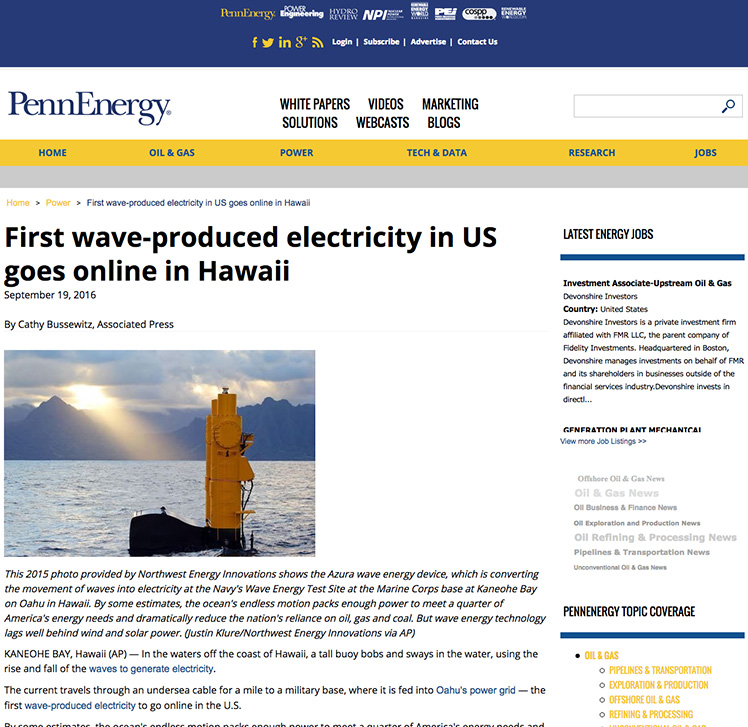OEF Rapid Review Articles
The first wave-produced electricity in the US goes online in Hawaii: and is fed into the island of Oahu’s power grid. By some estimates, the ocean’s endless motion packs enough power to meet a quarter of America’s energy needs and dramatically reduce the nation’s reliance on oil, gas and coal. But wave energy technology lags well behind wind and solar power, with important technical hurdles still to be overcome. To that end, the Navy has established a test site in Hawaii, with hopes the technology can someday be used to produce clean, renewable power for offshore fueling stations for the fleet and provide electricity to coastal communities in fuel-starved places around the world. However, it could be five to 10 years before wave energy technology can provide an affordable alternative to fossil fuels, experts say. Wave energy technology is at about the same stage as the solar and wind industries were in the 1980s. Both received substantial government investment and tax credits that helped them become energy sources cheap enough to compete with fossil fuels. Test sites run by other researchers are being planned or expanded in Oregon and California to take advantage of the powerful waves that pound the West Coast. One of those projects, Cal Wave, run by California Polytechnic State University, hopes to provide utility-scale power to Vandenberg Air Force Base. But while the U.S. government and military have put about $334 million into marine energy research over the last decade, Britain and the rest of Europe have invested more than $1 billion, according to the Marine Energy Council, a trade group.
LINK TO THE SOURCE ARTICLE:
First wave-produced electricity in US goes online in Hawaii
LINK TO THE SOURCE ARTICLE:
First wave-produced electricity in US goes online in Hawaii


